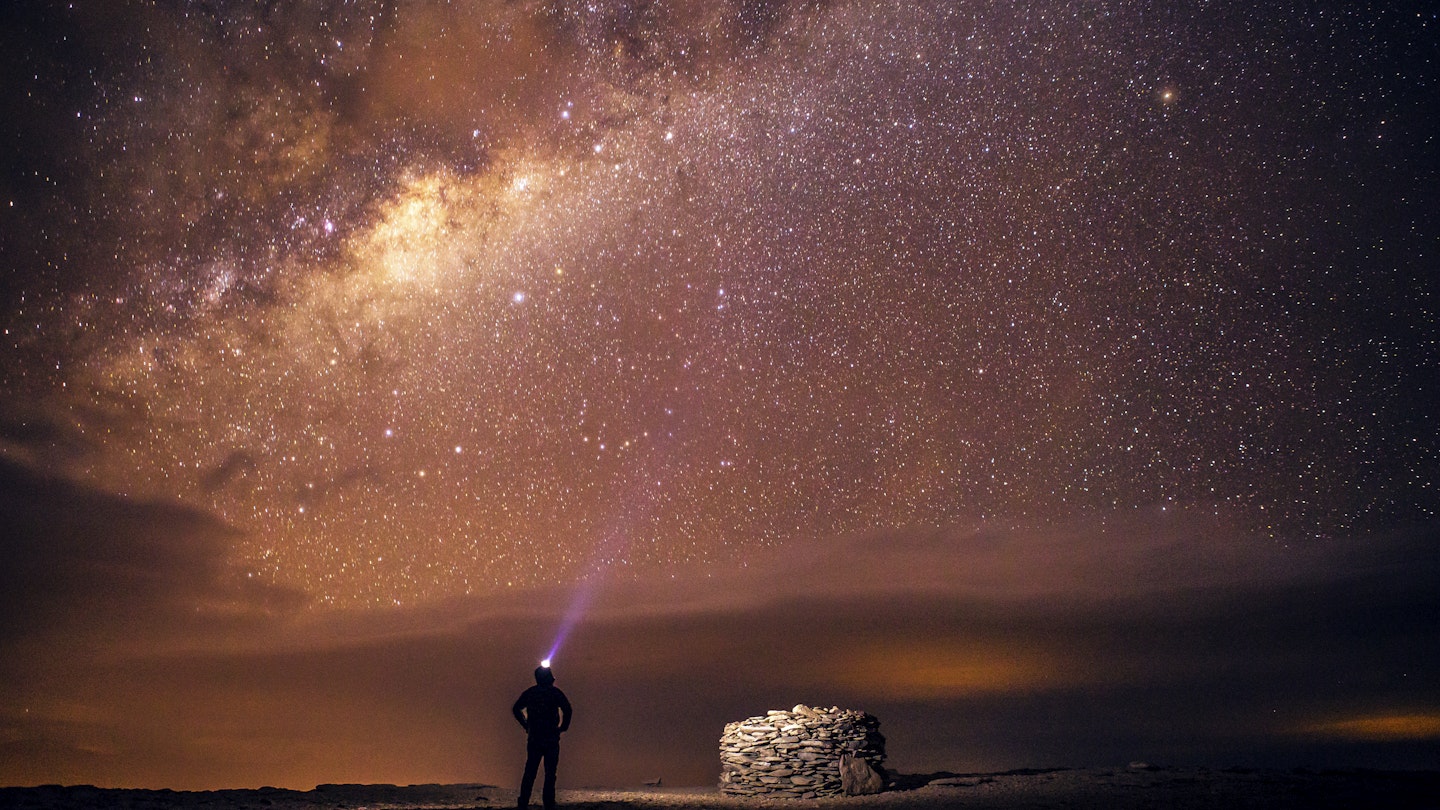Ultimate Stargazing Experience in Chile’s Atacama Desert
The Atacama Desert unfurls across northern Chile in sizzling salt flats, bone-dry sierras, barren beaches, and prickly patches of colorful cacti. However, one of its greatest features is only apparent after the sun plunges into the Pacific. That’s when earth’s most lunar-like landscape morphs into a dazzling dome of glittering stars – perfect for the ultimate stargazing trip.
Thanks to a unique combination of low humidity, high altitudes, and near non-existent light pollution, the Atacama is home to half of the world’s ground-based astronomy projects. Moreover, it has blossomed in recent years into a global hub for “astro-tourism.” Therefore, make the most of a star-studded trip to the world’s driest non-polar desert with the top tips in this beginner’s guide.
Elqui Valley and San Pedro de Atacama: Stargazing Hubs
For the best stargazing, you’ll want to steer clear of the Pacific coastline, which can be surprisingly cloudy in the mornings and evenings. Instead, base yourself in the interior valleys or up on the Altiplano (the high Andean tableland Chile shares with Bolivia and Peru). The best infrastructure can be found in two key stargazing hubs: Elqui Valley in the Coquimbo Region and San Pedro de Atacama in the Antofagasta Region. The former is just south of the desert proper in a fertile valley known for its pisco and wine production. Conversely, the latter is the Atacama’s most famous oasis, surrounded by high-altitude parklands, sunbaked sand dunes, and steaming volcanoes.
Both towns have a good mix of stargazing tours, lodgings, and observatories. The Elqui Valley is a better pick for those who want to pair their nighttime neck-craning with daytime enjoying of solar-powered craft breweries, experimental high-altitude vineyards, or one of a half-dozen pisco distilleries. Vicuña is the most logical base for stargazing here with the quickest access to nearby observatories. Pisco Elqui, further up in the valley, is filled with yoga studios, New Age retreat centers, and alternative therapies. San Pedro de Atacama lies in the middle of the desert and is one of Chile’s most popular resort towns, offering a greater array of restaurants and accommodations than the Elqui Valley.
Tourist-Friendly Observatories and Astro-Tours
Elqui Valley boasts the largest array of tourist-friendly observatories, most of which are located near Vicuña. Observatorio Cerro Mamalluca draws the biggest crowds with its two-hour English-language tours, which start with a lecture and segue into stargazing through a 12-inch telescope. Similarly, Observatorio Cancana offers two 14-inch telescopes, while Observatorio del Pangue features the largest publicly accessible telescope in the region at 25 inches, plus an enviable location within sight of where professionals work at Observatorio Interamericano Cerro Tololo.
San Pedro de Atacama has fewer observatories than the Elqui Valley but offers more astro-tours, which take you to remote patches of the desert where you can learn how to identify dwarf galaxies, such as the Magellanic Clouds, from supernova remnants, like the Crab Nebula. The leading agency here, SPACE, provides educational star tours at the largest park of public telescopes in South America, including the largest single publicly available telescope at 45 inches.
Indigenous Perspective on the Night Sky
If you spend one night gaining a scientific appreciation for the night sky, consider spending the next looking at the cosmos from an Indigenous perspective. Astro Elqui, in Vicuña, combines performances, discussions, and astronomical observations for a three-hour experience exploring the Andean cosmovision of the local Diaguita culture. Alternatively, Observatorio Etno-Astronomico Licanantay near San Pedro offers a similar “ethno-astronomical tour” that helps visitors understand the Andean night sky as viewed for centuries by the Indigenous Atacameño people. You’ll learn about how ancestral knowledge of the stars informed local agricultural practices while peering into the Milky Way to uncover messages hidden within its dark spots.
Professional Astronomers at Work
While you won’t be able to probe the night sky at the Atacama’s professional observatories, guided visits offer a fascinating peek into the life and work of top astronomers, who seek the answers to questions many haven’t even thought to ask. Observatorio Interamericano Cerro Tololo and La Silla, both near the Elqui Valley, are well equipped for tourists, offering tours on weekends, necessitating reservations well in advance.
The $1.4 billion Atacama Large Millimeter/submillimeter Array (ALMA), located near San Pedro, is the largest and most expensive ground-based astronomical project in existence. Although you can’t visit its 66 radio telescopes at 5050m (16,570ft), you can tour the ALMA Operations Support Facility on weekends with prior reservation.
Ideal Hotels and Campsites for Stargazing
Camping is one of the most affordable and straightforward ways to connect deeply with the stars above. In the Elqui Valley, most campsites lie in the shade of willow trees along the river below Pisco Elqui, complete with emerald green watering holes for escaping the heat. However, remember that temperatures drop significantly at night, especially in winter. The same is true for San Pedro de Atacama, which features over a dozen campgrounds on the town’s periphery; the best sites provide tent shelters to protect against wind and midday heat.
A great budget option for stargazing enthusiasts is Alfa Aldea in Vicuña, which includes an onsite telescope and star observation opportunities. For those with a more flexible budget, Elqui Domos offers clear-top domes, allowing you to stargaze comfortably from your bed. Additionally, Atacama Lodge near San Pedro caters to amateur astronomers. Although Elqui Valley is home to the impeccably designed Casa Molle, San Pedro boasts the majority of luxury lodges, with the best for stargazers being Nayara Alto Atacama, featuring a 16-inch telescope on a hill above the hotel for nightly sessions.





